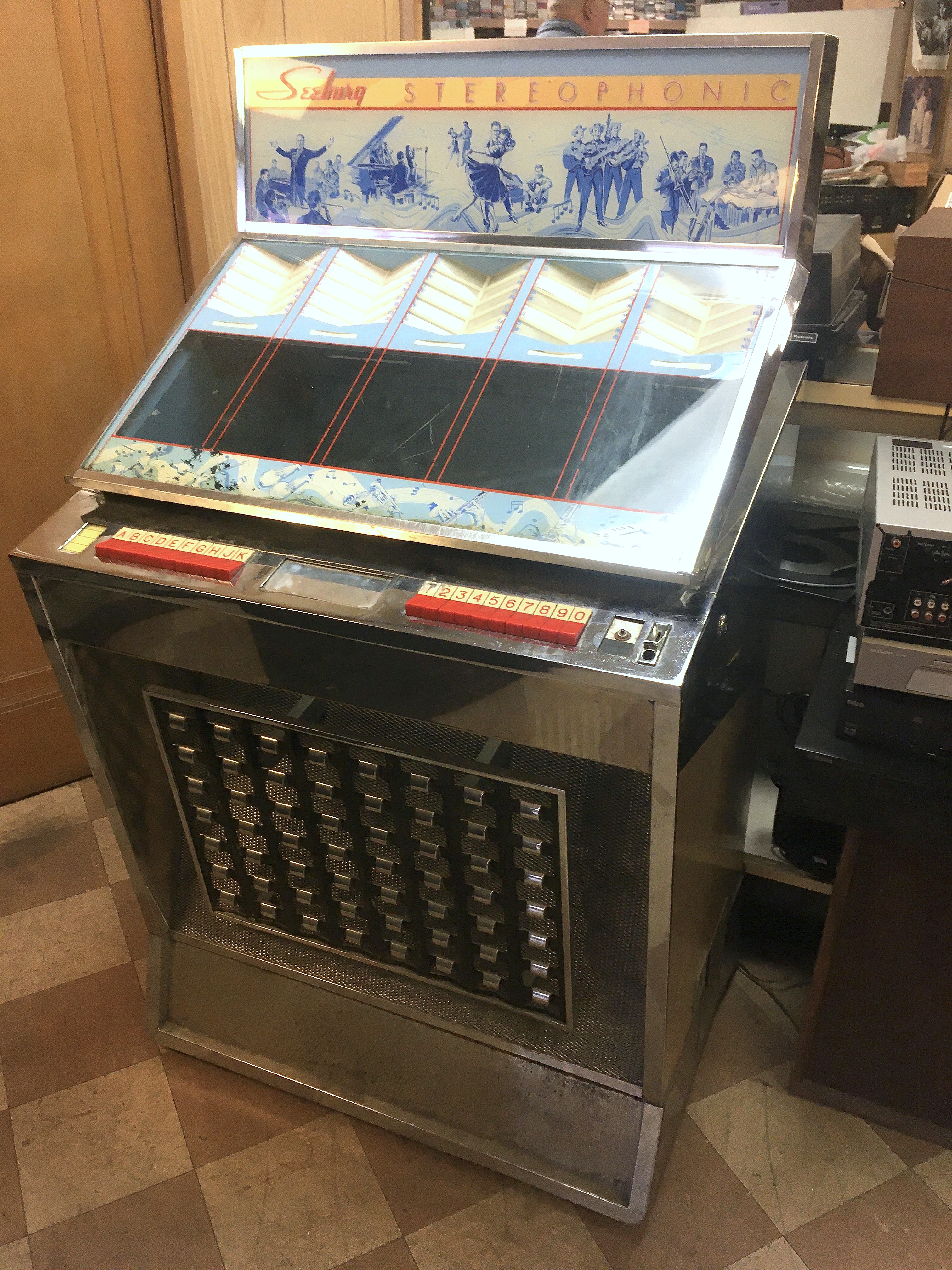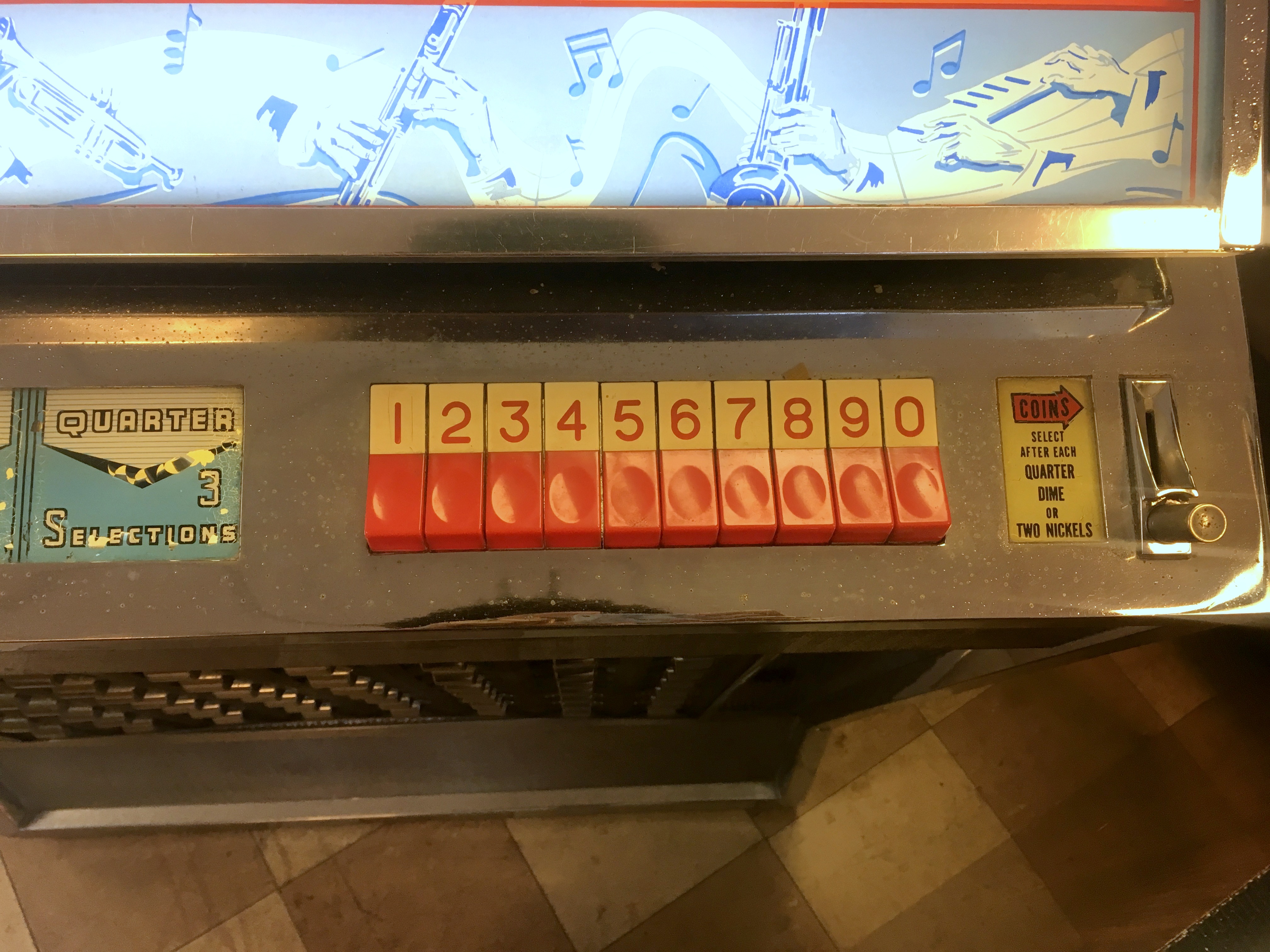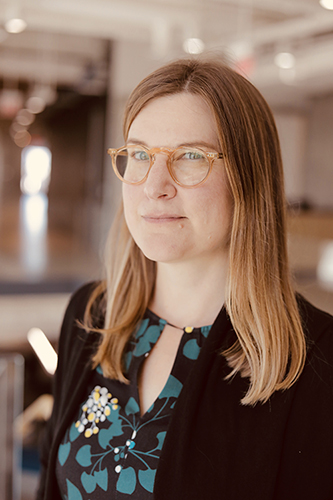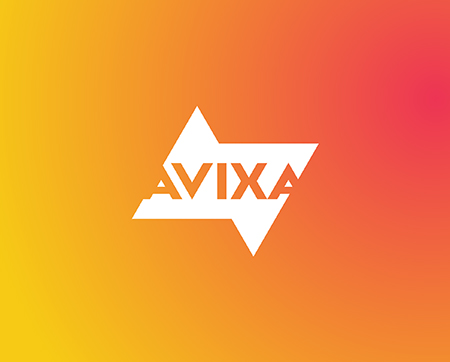Building a Jukebox to Connect Community with the Media Arts and AV
When music starts playing wherever a crowd is gathered, suddenly the experience becomes unified. People are moved together, as a group, and in individual ways as songs provoke different memories and emotions for each individual.
That’s why there is particular power in that delightfully archaic but still very present-tense notion of the jukebox. An individual selects a track from the options on the menu, and when it begins to play, the whole room is connected in a curated moment.

Creating that sense of shared connection is one reason why multimedia artist Elisa H. Hamilton chose a jukebox as a central component of her public art project for the city of Cambridge, Massachusetts. Developed as a submission for a juried Percent for Art Program selection process, Hamilton was commissioned to build her Jukebox for the Cambridge Foundry, a130-year-old industrial building that is being repurposed by the City of Cambridge and Cambridge Redevelopment Authority into a public community space for art, entrepreneurship, technology and workforce education.
Just like the jukeboxes of yore, Hamilton’s creation will unify listeners who visit the Foundry. But it won’t play the songs you could hear anywhere. It will be an evolving collection of stories recorded by members of the Cambridge Community.
Gathered in collaboration with community members to capture a broad swath of experiences, the Jukebox is built on what Hamilton defines as “story sharing,” rather than storytelling. “Telling is one-sided; sharing is something that we can all do together,” Hamilton explains. “This project is not just creating a space for listening, it’s creating a space for sharing and dialogue and conversation.”
The stories will be collected via facilitated recording sessions conducted in various community locations to include as many voices as possible. “It’s about creating access and thinking really carefully about how to include folks who historically have been excluded,” says Hamilton.
 Jukebox Album Art, created in
collaboration with GoodGood
Design
Jukebox Album Art, created in
collaboration with GoodGood
Design
“This intersection of AV, of storytelling, of community sharing, all of those elements really make this something very exceptional.”
That’s where the next layer of AV-driven community connection comes in. The stories will be recorded by The Loop Lab, another Cambridge-based organization founded on extending opportunities for creative and professional fulfillment to communities that aren’t always heard. Graduates and interns working within The Loop Lab production studio will facilitate audio recordings and the creation of multimedia files that will play back with simultaneous text translation on a video screen to allow inclusive and accessible enjoyment of the stories.
“Elisa has been an amazing visionary in trying to bring the stories of many generations of folks in Cambridge really alive, and using audio video technology to do that,” observes Christopher Hope, Executive Director of The Loop Lab. “The AV industry is rooted in communication and enhancing the communication experience, and it's been valuable to think about, what are we communicating? What stories get told? And why it's important to hear diverse stories. And the fact that she's created a venture that allows the community to be the editor of these stories is really essential.”
 Video stills from “Introducing Jukebox,” Jukebox’s kick-off virtual
program which took place on July 28, 2020.
Pictured from left to right: Elisa Hamilton, Jukebox Artist/Creator
- Lillian Hsu, Director of Public Art, Cambridge Arts Council - M.
Moses Michel, Co-Founder, The Loop Lab - Chris Hope,
Co-Founder and Executive Director, The Loop Lab - Stephanie
Couch, President, Foundry Consortium
Video stills from “Introducing Jukebox,” Jukebox’s kick-off virtual
program which took place on July 28, 2020.
Pictured from left to right: Elisa Hamilton, Jukebox Artist/Creator
- Lillian Hsu, Director of Public Art, Cambridge Arts Council - M.
Moses Michel, Co-Founder, The Loop Lab - Chris Hope,
Co-Founder and Executive Director, The Loop Lab - Stephanie
Couch, President, Foundry Consortium
The Loop Lab’s production studio is the revenue-generating extension of the organization’s educational and training programs. “It also allows us to be an employer, making us able to diversify the AV industry directly by hiring people of color and women to enter the industry,” Hope says. The Loop Lab is also an official Apprenticeship Sponsor for AV careers for the State of Massachusetts Executive Office of Labor and Workforce Development.
The jukebox itself will be a vintage 1960s-era model lovingly restored by Garnick’s Music in Lowell, Massachusetts. Rather than playing records, though, it will be modified to cue up digital files via its analog buttons. But the analog magic of watching a jukebox’s traditional record-playing mechanism won’t be lost. To fill the glass case with some visual wonder, Hamilton has designed a brightly colored “mechanical animation” of moving parts and pieces that will move in various sequences when a track is selected.
 Detail of jukebox buttons. These
mechanical buttons will be
connected to the jukebox’s inner
computer. To play a track, users
press a letter/number combination.
Detail of jukebox buttons. These
mechanical buttons will be
connected to the jukebox’s inner
computer. To play a track, users
press a letter/number combination.
“This project was very attractive to me in the sense that we're working with an artist whose practice is rooted in multimedia, rooted in technology, but also the application of technology to amplify the arts and the creative arts,” Hope says. “This intersection of AV, of storytelling, of community sharing, all of those elements really make this something very exceptional.”
The story sharing will begin once the Cambridge Foundry opens and the Jukebox is ready to play back its collected stories. And the sharing will continue. A series of live story events is planned, and Hamilton designed the Jukebox as a platform that will continue to evolve as new stories are collected and added to the menu.
Listening to the Jukebox will be a prompt to keep the stories coming, and new voices will be added all the time. Ideally, visitors will hear something and ask someone else to share a story that they’ve never told, or that they thought no one cared to hear, Hamilton describes: “It’s about recognizing that we all have a story, even those small stories that maybe we aren’t celebrating, but maybe we should be celebrating.”
 Rendering of the “Jukebox Nook” at
the Cambridge Foundry, courtesy of
CambridgeSeven Architects
Rendering of the “Jukebox Nook” at
the Cambridge Foundry, courtesy of
CambridgeSeven Architects
Read Next: AV Is Key to Telling Stories From a Distance
Now that distance will be one of the key virtues in venue and event design, large-scale storytelling will take on even more relevance, and that will mean lots of AV.






